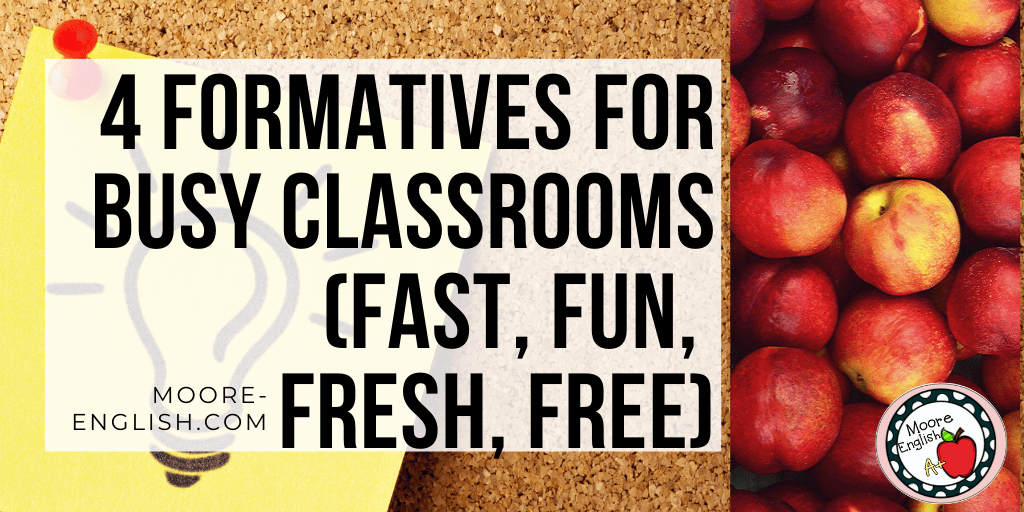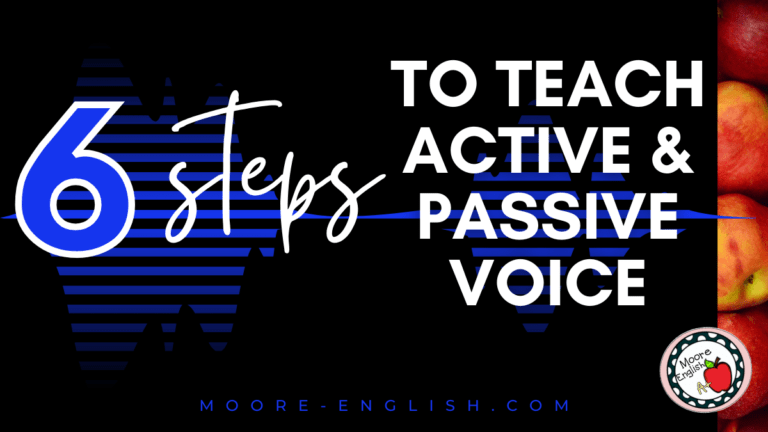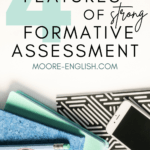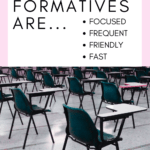One of my goals for this year is to incorporate more formative assessment. In the process, I have found the most effective formative assessments share 4 characteristics. I want to share those factors with you. And I also wanted to share the 4 formative assessments that have been most helpful for me.
This post this post may contain affiliate links. Please read the Terms of Use.
4 Factors for Effective Formative Assessment
First, formative assessment should be focused. Rather than giving students a sprawling quiz, focus on one or two skills or standards. For example, my sophomores are entering a unit on informational research. The standards in the unit cover a huge amount of ground: research, citation, assessing speaker’s credibility and source relevance, writing about research, presenting research, etc. The research standards alone cover a variety of skills. Rather than assess all those skills at one time, I’m choosing 1-2 per formative. This helps me to better focus instruction on one or two skills.
Similarly, formative assessments should be fast. I’m working to keep most of my formatives to 3 questions or fewer. For me, formative assessment is about collecting data to inform my instruction. If the formative takes up too much time, it begins to supplant instructional time when its purpose is actually to better focus instruction. Students can also become part of the process of collecting data.
Additionally, since formatives are so fast and focused, they are also frequent. In the span of a unit, I am regularly assessing students’ understanding of key concepts and skills. This allows me to recalibrate before the summative. The more frequently I assess, the more comfortable students become with the process and the more authentic their data becomes.
The Most Important Characteristic of Formative Assessment
Finally, and this will sound strange, formatives should also be friendly. Now, when I say friendly, I don’t mean fluffy or focused on unicorns or nonsense. Instead, formatives should have 3 friendly attributes. Formatives should be friendly for
- Students: A formative should not be designed to “trick” or needlessly frustrate students. Instead, a formative should invite students to show off everything they know and to communicate where they need additional support. If formatives become too frustrating, students are not going to complete them in good faith. Then the data from the formative becomes an inaccurate representation of student needs.
- Teachers: A formative should also not be agonizing for teachers to review. So if your formative takes more than 5-10 minutes for you to review, it may be too long or unfocused.
- Collaboration: My favorite formative assessments invite collaboration between teachers and teams. When teachers have the chance to look at common formative data, they can offer advice, share best practices, and determine where resources are needed. Read more about collaboration here.

4 Formatives to Try
There are countless ways to conduct formative assessment, but here are the four options I use most often. For more formative inspiration, check out my Pinterest board. I’ve put the options in order from least structured to most structured.
Heads Down/Thumbs Up: I have no idea where this strategy originated. But it’s a favorite because it can provide teachers with immediate feedback. After completing a lesson, a teacher asks students to put their heads down (to relieve some peer pressure). Students then give a thumbs up or down based on their understanding of the lesson. Placing this at a strategic point in the lesson allows teachers to immediately call an audible if needed. Or teachers can use the information to regroup: the thumbs up move on to independent practice while the thumbs down have a small group reteaching.
Tweets: I never thought Twitter would play such a big role in my classroom. But asking students to “tweet” about a lesson is a great way to get formative feedback. In the ELA classroom, students can tweet a summary. Students can also tweet in the voice of a specific character, or they can use hashtags to annotate a text. Or students can describe their confidence with a subject in a hashtag. I almost always use post-its or notecards for this formative assessment, but its strength is its flexibility and speed.
Google Forms: Of the formative assessment strategies described here, Google Forms are the most structured because they require the most work ahead of time. However, Google Forms are quick to use and set up. Plus, users can copy Forms to make quick adjustments. Of the strategies listed here, Google Forms also offers the most opportunities to use formative data to drive collaboration. As a team, teachers can design a Form to administer to students, collect the data in one place, and then segment the data based on any number of characteristics. In particular, I’m excited to try this Google Form strategy I read about from Caitlin Tucker.
My Favorite Formatives!
Entrance and Exit Tickets: Of late, this has been my favorite type of formative assessment. In particular, I’ve been using lots of entrance tickets to get students into the work the minute they walk in the door. Entrance tickets help students activate prior knowledge, act as a bell ringer, and can “prime the pump” for further learning. I have also been using exit tickets to measure student needs at the end of a lesson. This helps me adjust plans for the next day. Check out my favorite exit tickets here.
What formative assessments are most helpful in your classroom? Let us know in the comments!




















